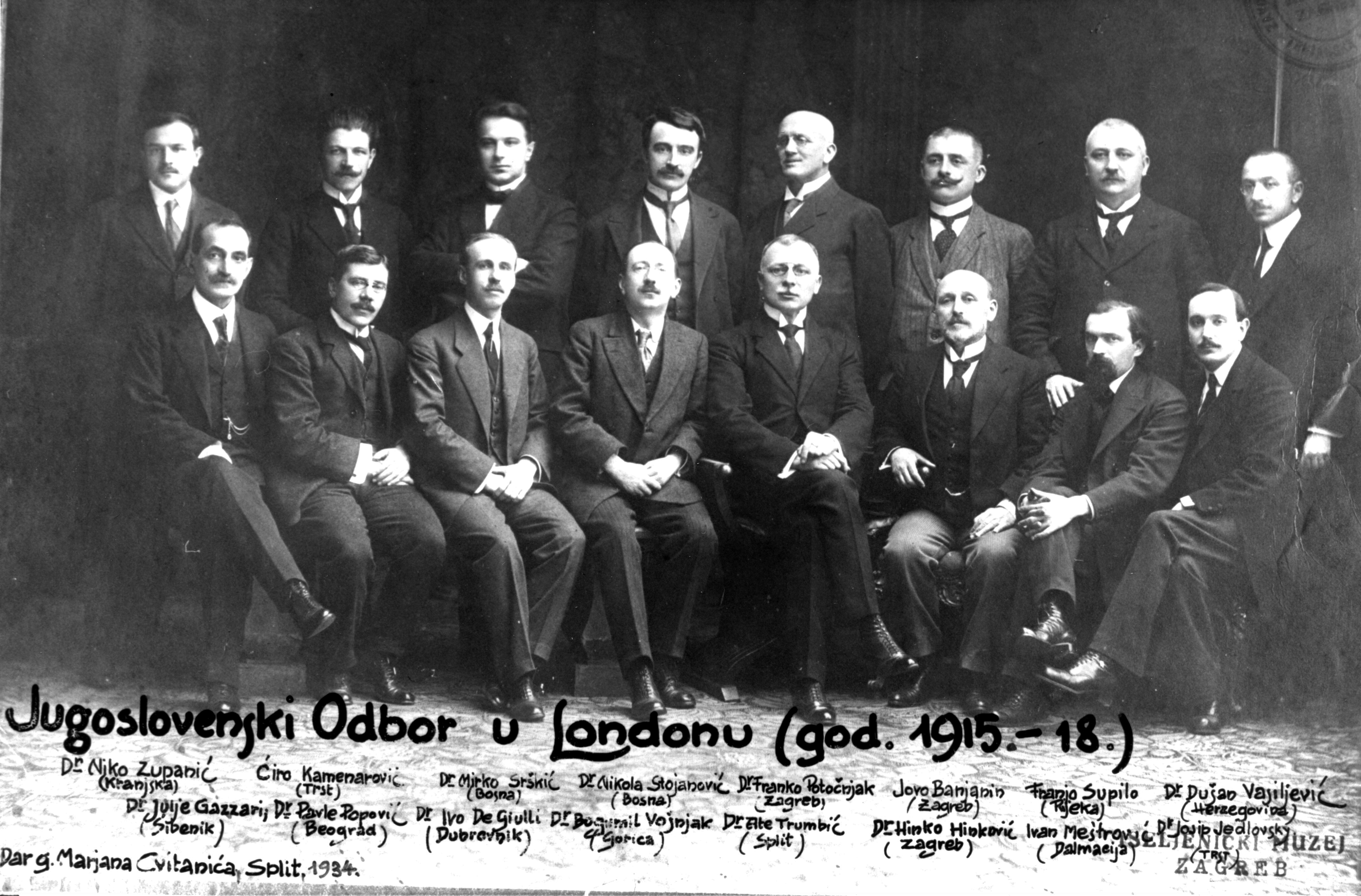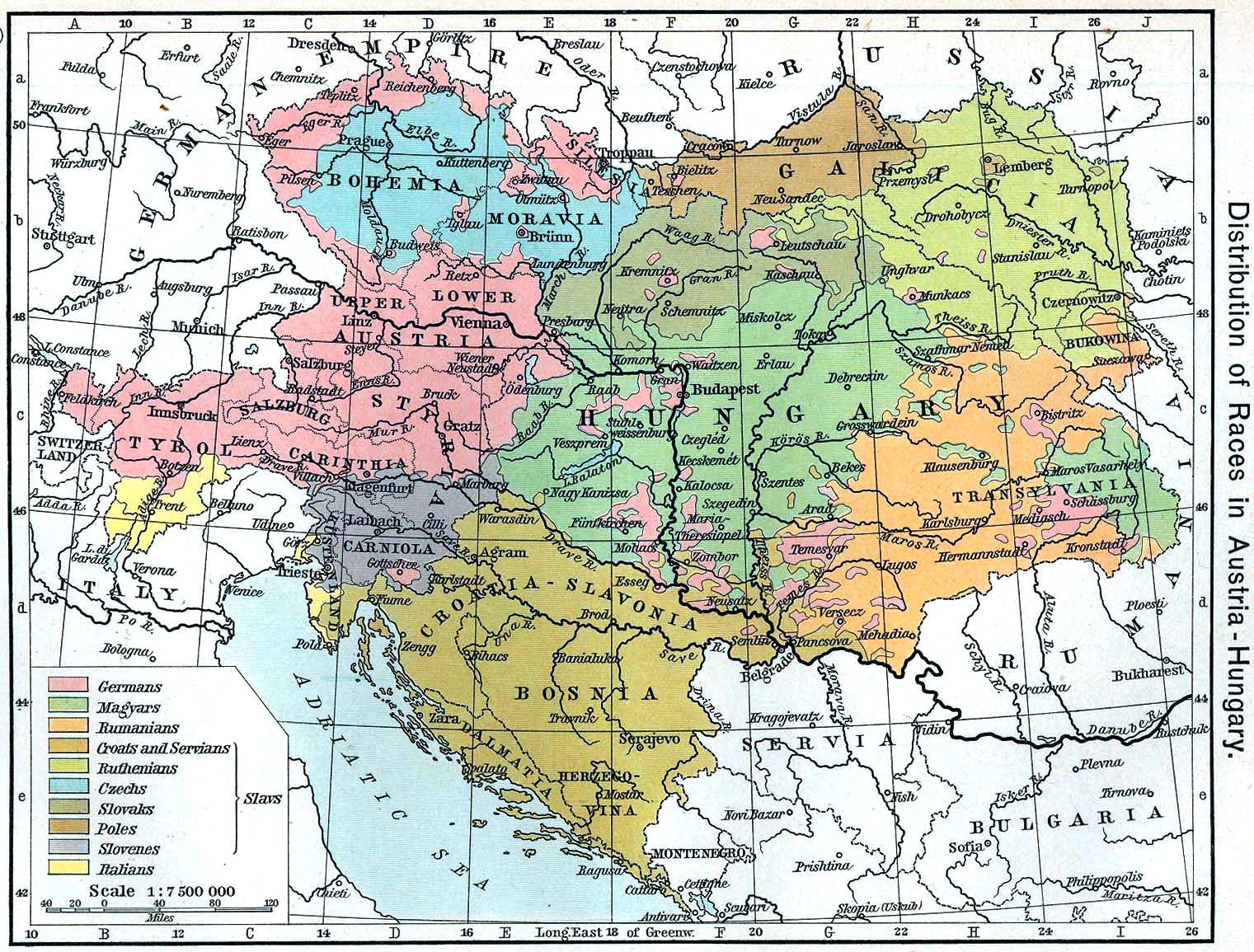|
Lipošćak Affair
The Lipošćak affair ( hr, Afera Lipošćak) was an alleged conspiracy led by the former Austro-Hungarian Army General of the Infantry Anton Lipošćak to seize power in the recently proclaimed State of Slovenes, Croats and Serbs at the end of the First World War. The majority view of the allegations is that they were fabricated by allies of the Croat-Serb Coalition leader Svetozar Pribičević. Lipošćak was arrested on 22 November 1918 under suspicion of treason. He was accused of plotting to establish councils composed of workers, peasants and soldiers in place of the existing authorities with the aim of reviving the Habsburg monarchy, or working on behalf of foreign powers or the Bolsheviks. The affair came amid widespread unrest in the country, advancing Italian Army forces enforcing territorial claims along the Adriatic Sea coast based on the Treaty of London, and in the immediate aftermath of a conference held in Geneva on 6–9 November. Representatives of the State ... [...More Info...] [...Related Items...] OR: [Wikipedia] [Google] [Baidu] |
Yugoslav Committee
Yugoslav Committee ( sh-Latn, Jugoslavenski odbor, sr-Cyrl, Југословенски одбор) was a political interest group formed by South Slavs from Austria-Hungary during World War I aimed at joining the existing south Slavic nations in an independent state. Founding members included: * Frano Supilo * Ante Trumbić * Ivan Meštrović * Hinko Hinković * Franko Potočnjak * Nikola Stojanović * Dušan Vasiljević First three members were Croats from Kingdom of Dalmatia, next two members were Croats from Kingdom of Croatia -Slavonia, while the last two were Serbs from Bosnia and Herzegovina. Their initial gathering happened in 1914 while the committee was officially formed on 30 April 1915 in the Parisian Hotel Madisson. As Britain was the leader of the Entente, London was chosen as the headquarters of the Committee. The president was Ante Trumbić. In 1915, there were 17 members in the Committee, of which 11 from the Croatian and Dalmatian littoral regions. During tha ... [...More Info...] [...Related Items...] OR: [Wikipedia] [Google] [Baidu] |
Condominium Of Bosnia And Herzegovina
A condominium (or condo for short) is an ownership structure whereby a building is divided into several units that are each separately owned, surrounded by common areas that are jointly owned. The term can be applied to the building or complex itself, as well as each individual unit within. Residential condominiums are frequently constructed as apartment buildings, but there are also rowhouse style condominiums, in which the units open directly to the outside and are not stacked, and on occasion "detached condominiums", which look like single-family homes, but in which the yards (gardens), building exteriors, and streets as well as any recreational facilities (such as a pool, bowling alley, tennis courts, and golf course), are jointly owned and maintained by a community association. Unlike apartments, which are leased by their tenants, condominium units are owned outright. Additionally, the owners of the individual units also collectively own the common areas of the prope ... [...More Info...] [...Related Items...] OR: [Wikipedia] [Google] [Baidu] |
Kingdom Of Dalmatia
The Kingdom of Dalmatia ( hr, Kraljevina Dalmacija; german: Königreich Dalmatien; it, Regno di Dalmazia) was a crown land of the Austrian Empire (1815–1867) and the Cisleithanian half of Austria-Hungary (1867–1918). It encompassed the entirety of the region of Dalmatia, with its capital at Zadar. History The Habsburg monarchy had annexed the lands of Dalmatia after the Napoleonic War of the First Coalition: when Napoleon Bonaparte launched his Italian Campaign into the Habsburg duchies of Milan and Mantua in 1796, culminating in the Siege of Mantua, he compelled Emperor Francis II to make peace. In 1797 the Treaty of Campo Formio was signed, whereby the Habsburg emperor renounced possession of the Austrian Netherlands and officially recognized the independence of the Italian Cisalpine Republic. In turn, Napoleon ceded to him the possessions of the Republic of Venice, including the Dalmatian coast ( Venetian Dalmatia) and the Bay of Kotor ( Venetian Albania). ''La S ... [...More Info...] [...Related Items...] OR: [Wikipedia] [Google] [Baidu] |
Kingdom Of Croatia-Slavonia
The Kingdom of Croatia-Slavonia ( hr, Kraljevina Hrvatska i Slavonija; hu, Horvát-Szlavónország or ; de-AT, Königreich Kroatien und Slawonien) was a nominally autonomous kingdom and constitutionally defined separate political nation within the Austro-Hungarian Empire. It was created in 1868 by merging the kingdoms of Croatia and Slavonia following the Croatian–Hungarian Settlement of 1868. It was associated with the Kingdom of Hungary within the dual Austro-Hungarian state, being within the Lands of the Crown of St. Stephen, also known as '' Transleithania''. While Croatia had been granted a wide internal autonomy with "national features", in reality, Croatian control over key issues such as tax and military issues was minimal and hampered by Hungary. It was internally officially referred to as the Triune Kingdom of Croatia, Slavonia and Dalmatia, also simply known as the Triune Kingdom, and had claims on Dalmatia, which was administrated separately by the Austrian ... [...More Info...] [...Related Items...] OR: [Wikipedia] [Google] [Baidu] |
Slovene Lands
The Slovene lands or Slovenian lands ( sl, Slovenske dežele or in short ) is the historical denomination for the territories in Central and Southern Europe where people primarily spoke Slovene. The Slovene lands were part of the Illyrian provinces, the Austrian Empire and Austria-Hungary (in Cisleithania). They encompassed Carniola, southern part of Carinthia, southern part of Styria, Istria, Gorizia and Gradisca, Trieste, and Prekmurje. Their territory more or less corresponds to modern Slovenia and the adjacent territories in Italy, Austria, Hungary, and Croatia, where autochthonous Slovene minorities live. In the areas where present-day Slovenia borders to neighboring countries, they were never homogeneously ethnically Slovene. Terminology Like the Slovaks, the Slovenes preserve the self-designation of the early Slavs as their ethnonym. The term ''Slovenia'' ("Slovenija") was not in use prior to the early 19th century, when it was coined for political purposes by ... [...More Info...] [...Related Items...] OR: [Wikipedia] [Google] [Baidu] |
National Council Of Slovenes, Croats And Serbs
The State of Slovenes, Croats and Serbs ( sh, Država Slovenaca, Hrvata i Srba / ; sl, Država Slovencev, Hrvatov in Srbov) was a political entity that was constituted in October 1918, at the end of World War I, by Slovenes, Croats and Serbs ( Prečani) residing in what were the southernmost parts of the Austro-Hungarian Empire. Although internationally unrecognised, this was the first incarnation of a Yugoslav state founded on the Pan-Slavic ideology. Thirty-three days after it was proclaimed, the state joined the Kingdom of Serbia and the Kingdom of Montenegro to form the Kingdom of Serbs, Croats and Slovenes. Name The state's name derives from the three main South Slavic ethnic groups that inhabited it: the Slovenes, Croats, and Serbs. The Croats identified in the name were those residing in the preceding kingdoms of Croatia-Slavonia, Bosnia and Herzegovina and Dalmatia (including Boka Kotorska). The Serbs identified in the name were those residing in Bosnia and Herz ... [...More Info...] [...Related Items...] OR: [Wikipedia] [Google] [Baidu] |
Austria-Hungary
Austria-Hungary, often referred to as the Austro-Hungarian Empire,, the Dual Monarchy, or Austria, was a constitutional monarchy and great power in Central Europe between 1867 and 1918. It was formed with the Austro-Hungarian Compromise of 1867 in the aftermath of the Austro-Prussian War and was dissolved shortly after its defeat in the First World War. Austria-Hungary was ruled by the House of Habsburg and constituted the last phase in the constitutional evolution of the Habsburg monarchy. It was a multinational state and one of Europe's major powers at the time. Austria-Hungary was geographically the second-largest country in Europe after the Russian Empire, at and the third-most populous (after Russia and the German Empire). The Empire built up the fourth-largest machine building industry in the world, after the United States, Germany and the United Kingdom. Austria-Hungary also became the world's third-largest manufacturer and exporter of electric home appliances, e ... [...More Info...] [...Related Items...] OR: [Wikipedia] [Google] [Baidu] |
Slovenes
The Slovenes, also known as Slovenians ( sl, Slovenci ), are a South Slavs, South Slavic ethnic group native to Slovenia, and adjacent regions in Italy, Austria and Hungary. Slovenes share a common ancestry, Slovenian culture, culture, History of Slovenia, history and speak Slovene language, Slovene as their native language. Outside of Slovenia and Europe, Slovenes form diaspora groups in the United States, Canada, Argentina and Brazil. Population Population in Slovenia Most Slovenes today live within the borders of the independent Slovenia (2,100,000 inhabitants, 83 % Slovenes est. July 2020). In the Slovenian national census of 2002, 1,631,363 people ethnically declared themselves as Slovenes, while 1,723,434 people claimed Slovene as their native language. Population abroad The autochthonous Slovene minority in Italy is estimated at 83,000 to 100,000, the Carinthian Slovenes, Slovene minority in southern Austria at 24,855, in Slovenes of Croatia, Croatia at 13,200, and in ... [...More Info...] [...Related Items...] OR: [Wikipedia] [Google] [Baidu] |
Serbs
The Serbs ( sr-Cyr, Срби, Srbi, ) are the most numerous South Slavic ethnic group native to the Balkans in Southeastern Europe, who share a common Serbian ancestry, culture, history and language. The majority of Serbs live in their nation state of Serbia, as well as in Bosnia and Herzegovina, Croatia, Montenegro, and Kosovo. They also form significant minorities in North Macedonia and Slovenia. There is a large Serb diaspora in Western Europe, and outside Europe and there are significant communities in North America and Australia. The Serbs share many cultural traits with the rest of the peoples of Southeast Europe. They are predominantly Eastern Orthodox Christians by religion. The Serbian language (a standardized version of Serbo-Croatian) is official in Serbia, co-official in Kosovo and Bosnia and Herzegovina, and is spoken by the plurality in Montenegro. Ethnology The identity of Serbs is rooted in Eastern Orthodoxy and traditions. In the 19th century ... [...More Info...] [...Related Items...] OR: [Wikipedia] [Google] [Baidu] |
Croats
The Croats (; hr, Hrvati ) are a South Slavic ethnic group who share a common Croatian ancestry, culture, history and language. They are also a recognized minority in a number of neighboring countries, namely Austria, the Czech Republic, Germany, Hungary, Italy, Montenegro, Romania, Serbia, Slovakia and Slovenia. Due to political, social and economic reasons, many Croats migrated to North and South America as well as New Zealand and later Australia, establishing a diaspora in the aftermath of World War II, with grassroots assistance from earlier communities and the Roman Catholic Church. In Croatia (the nation state), 3.9 million people identify themselves as Croats, and constitute about 90.4% of the population. Another 553,000 live in Bosnia and Herzegovina, where they are one of the three constituent ethnic groups, predominantly living in Western Herzegovina, Central Bosnia and Bosnian Posavina. The minority in Serbia number about 70,000, mostly in Voj ... [...More Info...] [...Related Items...] OR: [Wikipedia] [Google] [Baidu] |
Bundesarchiv Bild 183-2010-0420-501, Anton Korosec
, type = Archive , seal = , seal_size = , seal_caption = , seal_alt = , logo = Bundesarchiv-Logo.svg , logo_size = , logo_caption = , logo_alt = , image = Bundesarchiv Koblenz.jpg , image_caption = The Federal Archives in Koblenz , image_alt = , formed = , preceding1 = , preceding2 = , dissolved = , superseding1 = , superseding2 = , agency_type = , jurisdiction = , status = Active , headquarters = PotsdamerStraße156075Koblenz , coordinates = , motto = , employees = , budget = million () , chief1_name = Michael Hollmann , chief1_position = President of the Federal Archives , chief2_name = Dr. Andrea Hänger , chief2_position ... [...More Info...] [...Related Items...] OR: [Wikipedia] [Google] [Baidu] |






.png)